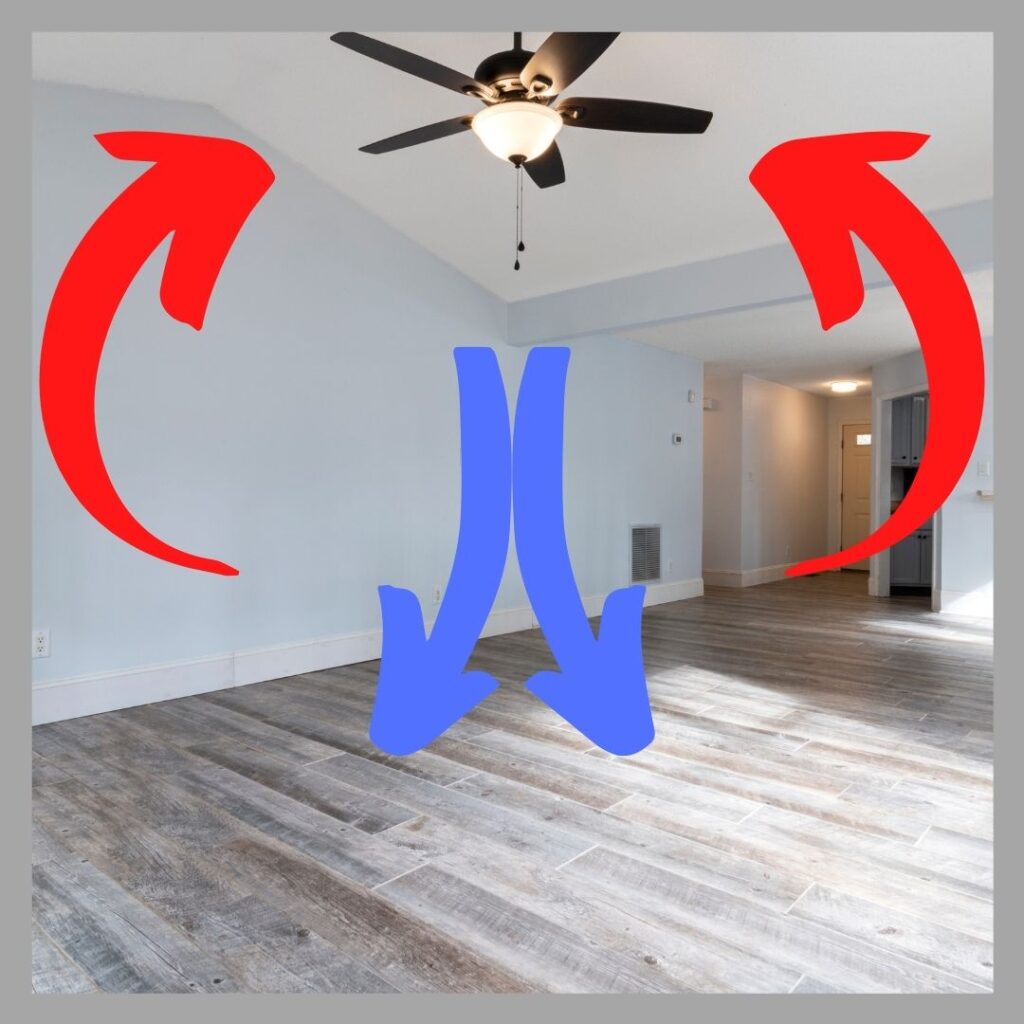Which Way Should My Fan Go During Summer
The Ceiling fan was invented in 1882 by Philip Diehl. The motor was original created for sewing machines. In 1882, he adjusted the motor into the ceiling fan we know today.
The best summertime fan direction is counter-clockwise. This forward spin forces air downward creating a cooling effect. Counter-clockwise fan rotation gives the effect of cool air when it is actually just blowing air.
Clockwise rotation actually gives a room greater circulation. This is because it brings the air from the center of the room and pushes it up and around to all parts of the room. Fan rotation mostly depends on your needs. The best summertime fan direction would definitely be counter-clockwise.

When is Counter-Clockwise Good?
Summer
The wind chill effect that a counter-clockwise fan creates can really help on a hot summer day. The blowing air can help a room feel up to 4 degrees cooler than it actually is.
Check out Can Ceiling Fans Warm a Room for Winter tips.
Moving air increases perspiration evaporation
Increased moving air allows for easier evaporation of perspiration. This means that you will sweat less and ultimately feel more comfortable.
Saving money
Because a ceiling fan can create a difference of 4 degrees in a room. People don’t have to turn their air conditioners too low levels. This means less energy consumption and a lower monthly bill.
Tip: Make sure that your fan blades are at least 10 inches from the ceiling. This allows for maxim air circulation and ensures that air is circulated to all parts of the room.
How To Change Ceiling Fan Direction for Summer?
All ceiling fans have a switch that is mounted on the motor housing. This switch makes it simple and easy for anybody to change the direction of your fan. Simply stand underneath your fan and if you don’t feel the air being forced down on your head then the fan is going clockwise. Flip the switch and the fan should start spring counter-clockwise.
What is Clockwise and Counter-Clockwise?
Clockwise: Moving in the direction of the hands on a clock.
Counter-clockwise: Moving the opposite direction on the hands on a clock.
Does Changing Fan Direction Really Matter?
Ceiling fans rotate to blow air throughout a room. If your fan is spinning then you are in good shape. Circulation is the most important factor, circulation will take place as long as the fan is spinning. This will disperse the cold A/C air throughout the room.
Switching the fan direction counter-clockwise can help give a cooling effect. This is best used if your A/C unit is struggling during the summer months.

